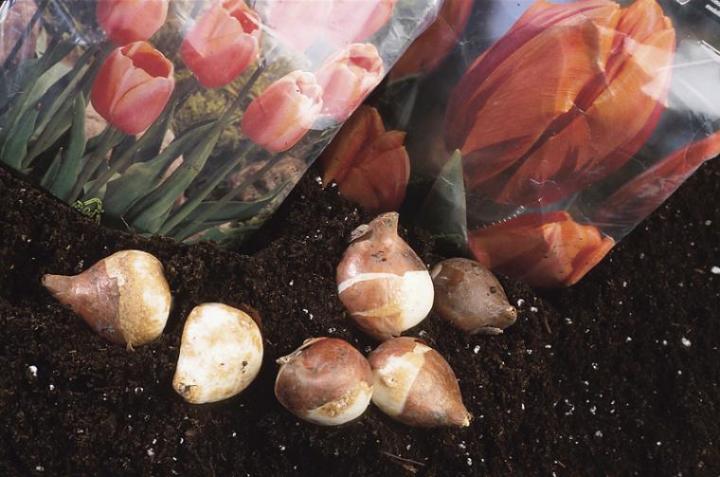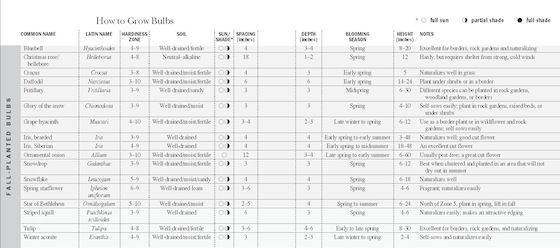Fall Bulbs: Planting for Spring Flowers
How and When to Plant Fall Bulbs
How and When to Plant Fall Bulbs
 https://www.almanac.com/content/fall-bulbs-planting-spring-flowers?trk_msg=VU1VQST97HC4B36SI7NBUQGJ2S&trk_contact=EEBLFVJ2I0VAQT9EM5JFVJAK9O&trk_sid=0Q018PF24JEPI1ER5LT0LSC7PC&utm_source=Listrak&utm_medium=Email&utm_term=Fall%20Flower%20Bulbs%3A%20Planting%20for%20Spring%20Blooms%20%28title%29&utm_campaign=Companion%20Daily
https://www.almanac.com/content/fall-bulbs-planting-spring-flowers?trk_msg=VU1VQST97HC4B36SI7NBUQGJ2S&trk_contact=EEBLFVJ2I0VAQT9EM5JFVJAK9O&trk_sid=0Q018PF24JEPI1ER5LT0LSC7PC&utm_source=Listrak&utm_medium=Email&utm_term=Fall%20Flower%20Bulbs%3A%20Planting%20for%20Spring%20Blooms%20%28title%29&utm_campaign=Companion%20Daily
Growing the best spring flowers means planting bulbs in the fall! See our handy fall-planted bulbs chart for tips on planting bulbs in autumn.
Fall bulbs, such as tulips and daffodils, produce the first blooms of next year’s season. The bulbs spend the winter making roots and come up early in the spring.
So, if you think that autumn’s the time to stop gardening, think again! There still a lot of work to be done—right now, it’s bulb-planting time!


Fall-Planted Bulbs Growing Chart
Fall bulbs, such as tulips and daffodils, produce the first blooms of next year’s season. The bulbs spend the winter making roots and come up early in the spring.
So, if you think that autumn’s the time to stop gardening, think again! There still a lot of work to be done—right now, it’s bulb-planting time!
Fall-Planted Flower Bulbs
In the fall, you’ll find bulbs to purchase everywhere. Make sure you buy your bulbs from a reputable nursery, garden center, or mail-order seed catalog. Remember, second-rate bulbs produce second-rate flowers or don’t sprout at all. Here are some of the most popular fall-planted bulbs, which all produce lovely spring flowers. See the chart farther down the page for planting information on these and other spring flower favorites.
When to Plant Bulbs:
- Plant fall bulbs after the heat of summer has passed, but before the ground freezes. Consult our Frost Dates Calculator to see when the first fall frost will be in your area. In the lower South, where you may not have a hard freeze, early November is a good time to plant.
- Ideally, plant your bulbs soon after you purchase them.
- See the chart, below, for type of bulbs by hardiness zone. In the warmer South, note that some bulbs need to be treated as annuals instead of perennials; they’ll bloom once and then they’re done. For example, you will have to plant tulip bulbs again each year. Still, they are a beautiful sight to behold and well worth the effort! Other fall bulbs, such as daffodils, will act as perennials and come up year after year.
Fall Bulbs Planting Chart
Click to enlarge the Bulbs Growing Chart below!
Fall-Planted Bulbs Growing Chart
How to Plant Bulbs:
- Select a site with lots of sun and well-drained soil. Work a few inches of compost into the soil before planting.
- Plant bulbs generously in case some do not sprout. And plant them in random order and spacing for a more natural appearance. If you love groves of daffodils and blanketed landscapes of tulips, be prepared to buy and plant a large quantity of bulbs!
- In general, plant bulbs at a depth of three times the width of the bulb.
- After planting, apply fertilizer low in nitrogen, such as a 9-6-6 formulation. If your soil is sandy, plant bulbs slightly deeper; in clay soils, slightly shallower.
- Water well after planting. Apply mulch to keep the weeds down and hold in moisture.
- Do you have voles or squirrels? Consider planting your bulbs in a “cage” fashioned with chicken wire. Also, check out our tips for preventing vole damage and squirrel damage. Or try planting some rodent-proof bulbs.

















